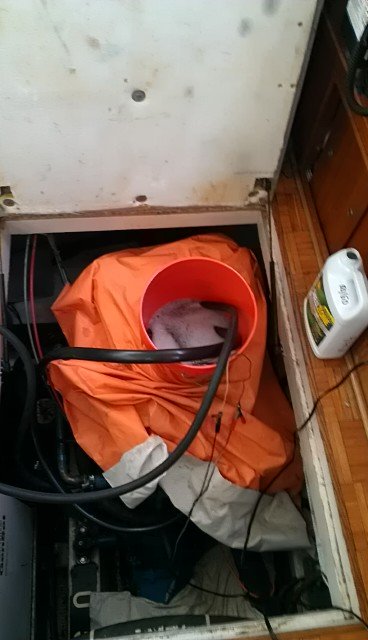pukeanddie
Veteran Member
- Joined
- Mar 25, 2015
- Messages
- 26
- Location
- United States
- Vessel Name
- Mooncusser
- Vessel Make
- Rosborough RF28
I have a Perkin's 4.236 in a small trawler I keep in the salt water in one of the river outlets off Boston Harbor. I moved my mooring recently up river a bit and for whatever reason the fouling within my cooling system, particularly heat exchanger and oil coolers has gotten out of control. I have a strainer on the intake, and change the zincs annually, but inevitably half way through the season my temp starts rising and when I remove the end cap on my heat exchanger it's full of growth and half the tubes are plugged up, usually along the bottom half of the exchanger where the water pools. My particular heat exchanger only has a removable cap on the intake end of the exchanger. I can rod out the tubes of the exchanger, but from what I understand it's best to do this against the flow, which I am unable to do.
To make matters worse, due to my engine installation, it's nearly impossible to pull the heat exchanger or open up the hoses to it without stripping all the components off of my engine. It's full days work just to get the exchanger on/off the engine.
So my question is, does anyone have any tips or tricks that might solve my issue? can I add something in the strainer periodically through the season that might kill the growth? Has anyone ever tried mounting the heat exchanger off the engine in a more accessible place?
To make matters worse, due to my engine installation, it's nearly impossible to pull the heat exchanger or open up the hoses to it without stripping all the components off of my engine. It's full days work just to get the exchanger on/off the engine.
So my question is, does anyone have any tips or tricks that might solve my issue? can I add something in the strainer periodically through the season that might kill the growth? Has anyone ever tried mounting the heat exchanger off the engine in a more accessible place?

